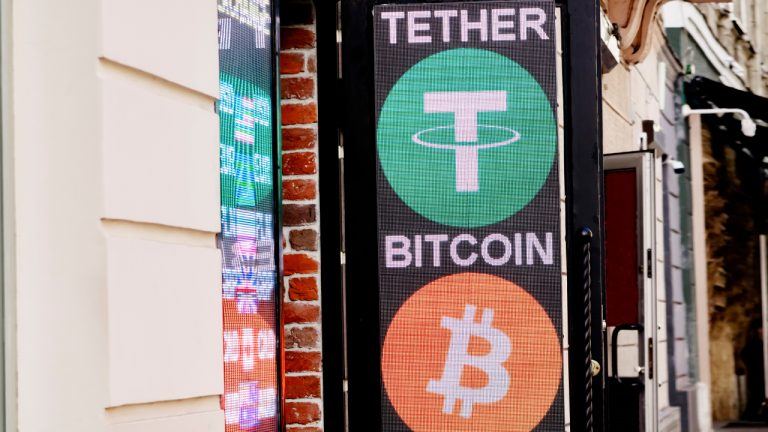With history and state expiry at its core, The Purge addresses Ethereum’s growing data load by discarding old, redundant data and enabling partial state expiry. This move aims to make node operations accessible even on mobile devices, enhancing decentralization and security. Vitalik envisions this protocol evolution as a pathway to a lighter, more accessible blockchain without sacrificing Ethereum’s foundational permanence.
Ethereum co-founder Vitalik Buterin’s new post is the latest in a series that outlines an evolution for Ethereum that could redefine the network’s efficiency, accessibility, and storage requirements. This new development reflects a pressing need to streamline Ethereum by reducing the storage load on individual nodes, improving network speed, and maintaining the blockchain’s integrity.
Source: Vitalik
Tackling Data Bloat: Why The Purge Is NecessaryVitalki says that one of the biggest challenges facing Ethereum today is its vast data storage needs. Over time, as transactions accumulate and smart contracts proliferate, the blockchain has grown immensely, making it harder for new nodes to join and for the network to operate seamlessly. Presently, a fully synced Ethereum node requires over 1.17 terabytes of storage, and this requirement is expected to keep rising. This storage strain acts as a barrier to decentralization, as fewer individuals have the capacity to run nodes, leaving the network more vulnerable to centralization and increasing costs for users and operators alike.
The Purge aims to alleviate this data burden by introducing a mechanism to periodically “expire” less critical data while keeping vital information intact. This evolution would allow Ethereum to remain decentralized and accessible, with a lighter protocol that still provides the same level of security and functionality.
The Purge, 2023 roadmap.
Key Concepts of The Purge: State and History ExpiryAt the heart of The Purge are two core ideas: state expiry and history expiry.
History Expiry: This concept focuses on deleting or offloading historical transaction data that is no longer actively needed. The historical data refers to older transactions and blocks that, while valuable for an archival perspective, do not need to be stored by every single node. Vitalik envisions a model where this historical data could be stored by fewer, specialized “archive nodes” rather than the broader network, significantly reducing storage needs for typical nodes. State Expiry: More complex and innovative, state expiry tackles the “state” of Ethereum—the active data that tracks all ongoing balances, contracts, and more. Currently, the state continuously expands because each new transaction or contract adds data that’s permanently accessible. Buterin suggests that this system is unsustainable long-term. His solution, state expiry, would introduce a method for periodically “archiving” older, less-accessed state data, which could be temporarily “forgotten” by most nodes. If this data is needed later, cryptographic proofs would allow it to be revived, ensuring both data integrity and efficiency.Source: Vitalik
A Push Towards Statelessness: Lightening the LoadOne of The Purge’s ultimate goals is to enable “stateless clients,” a concept that removes the need for nodes to store all the blockchain’s data in real-time. Stateless clients would rely on a reduced dataset, allowing them to verify blocks without needing massive storage capacity. This transformation could pave the way for Ethereum nodes to run on lightweight devices like smartphones, tablets, or even wearables. Buterin envisions this as a major step forward for Ethereum’s decentralization and accessibility, as it lowers the hardware requirements for node operators, making it easier for more people to participate.
Stateless clients would lean heavily on cryptographic techniques such as witnesses—compact proofs containing only the data relevant to a specific transaction. By processing transactions in this way, nodes can validate activity on the blockchain without downloading the full history or state data, creating a more scalable and versatile network.
Source: Vitalik
Addressing Technical Debt: Simplifying Ethereum’s CodeBeyond data management, The Purge aims to simplify Ethereum’s protocol by eliminating outdated or redundant features. Over the years, Ethereum’s codebase has grown increasingly complex due to the constant addition of new features and updates. This has led to “technical debt”—legacy code that is difficult to maintain, test, or improve without significant effort. Removing or rewriting these older components will make Ethereum more efficient and reliable, and reduce the chances of future bugs and vulnerabilities.
Streamlining the protocol will also lower the cognitive barrier for developers new to Ethereum, potentially accelerating innovation within the ecosystem. A simpler codebase means faster development, easier troubleshooting, and a more attractive environment for new talent.
Will The Purge Lower Gas Fees?While The Purge will not directly reduce gas fees, it could have an indirect impact on network costs. By improving Ethereum’s efficiency and reducing storage burdens, node operators may see lower operational expenses, potentially allowing for lower fees in the long run. Moreover, a faster and more scalable Ethereum network could ultimately accommodate more users and transactions without the congestion that typically drives up gas prices. However, gas fees depend on multiple factors, including network demand, so the direct impact of The Purge on transaction costs remains uncertain.
Decentralization and Security: Ensuring Robustness Through Efficient DesignVitalik’s vision for Ethereum involves maintaining the network’s decentralization while enhancing its security. By offloading historical data and streamlining storage requirements, The Purge will allow more individuals and organizations to run nodes, even on less powerful devices. This inclusivity strengthens the network’s resistance to centralization, ensuring that power remains distributed across many participants.
Security, too, will benefit from these changes. The move towards stateless clients and the reduction of technical debt will simplify the verification process, potentially reducing the risk of bugs or vulnerabilities in Ethereum’s code. Additionally, by allowing data to be “expired” rather than held indefinitely, The Purge minimizes the attack surface for potential security threats targeting the stored state or historical data.
The Bigger Picture: Ethereum’s Future in Prediction Markets and BeyondWhile The Purge is not a flashy upgrade like previous Ethereum phases, it is arguably one of the most strategic moves in ensuring Ethereum’s long-term viability. This approach to data and protocol management reflects a broader philosophical shift toward a leaner, more sustainable blockchain. By removing redundant data and enabling partial storage, Ethereum positions itself as a more robust, scalable platform capable of handling future growth in areas like prediction markets, decentralized finance, and other applications that require efficient, real-time data.
As Ethereum continues to evolve, The Purge represents a commitment to efficiency, accessibility, and future-proofing. It speaks to Ethereum’s ambition not just to be the most widely used blockchain, but also the most sustainable, adaptable, and user-friendly. Vitalik’s roadmap underscores that Ethereum’s potential is not limited to today’s technology; instead, it seeks to shape tomorrow’s decentralized world, allowing anyone—from developers to everyday users—to participate in and benefit from a truly distributed and open financial system.
For more on Vitalik’s vision for The Purge and Ethereum’s ongoing evolution, see his full blog post here.
















